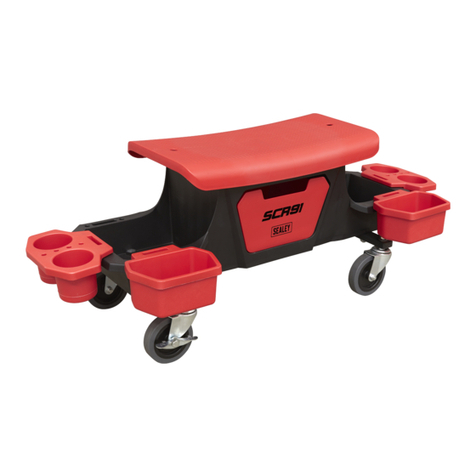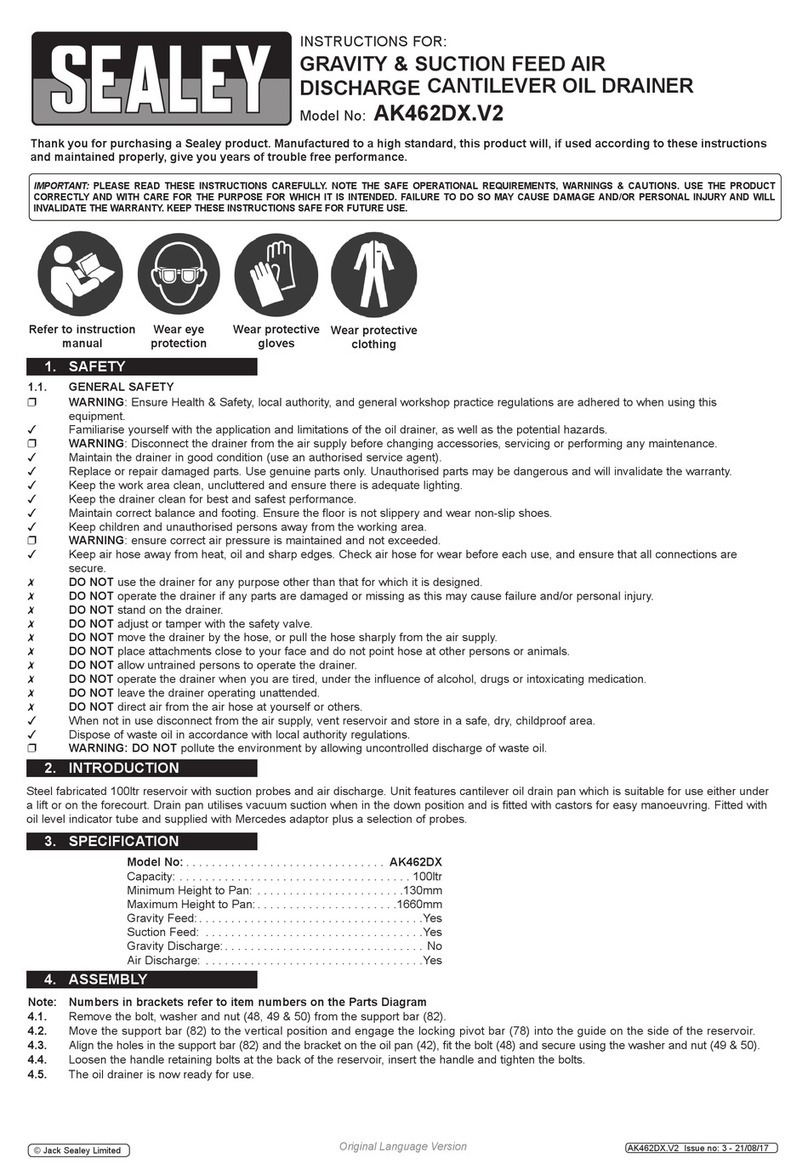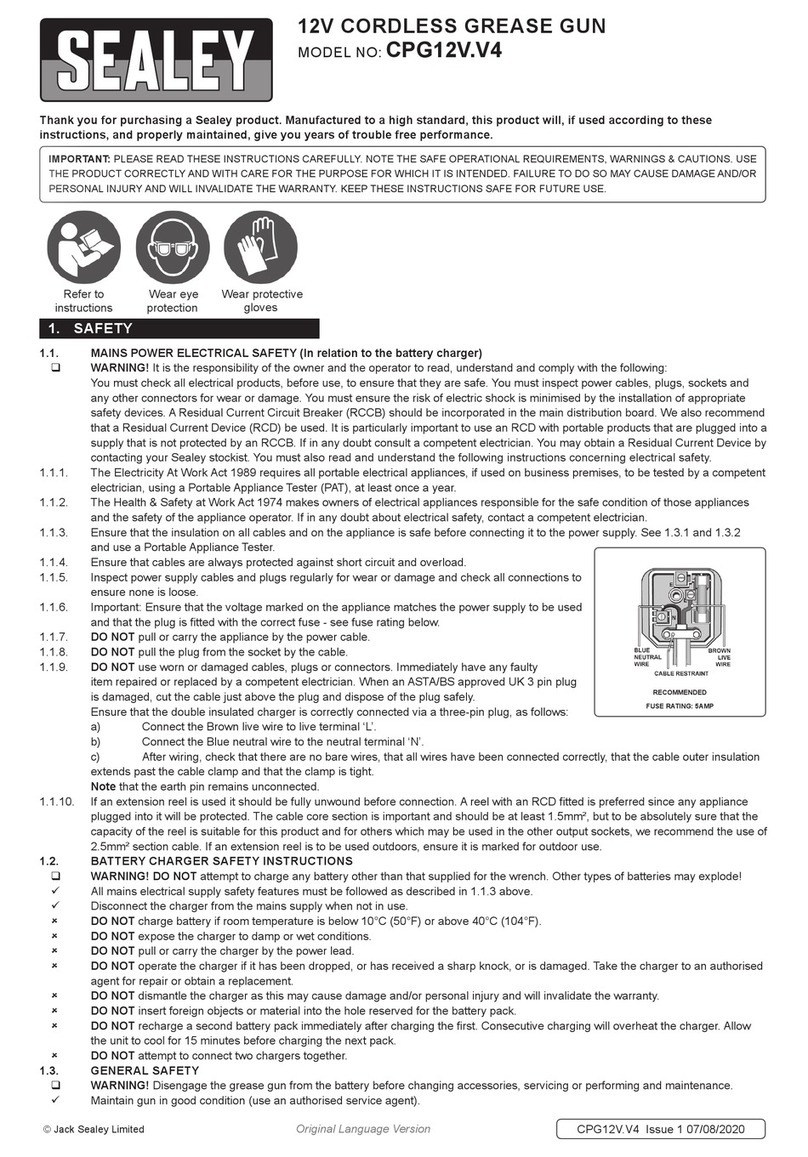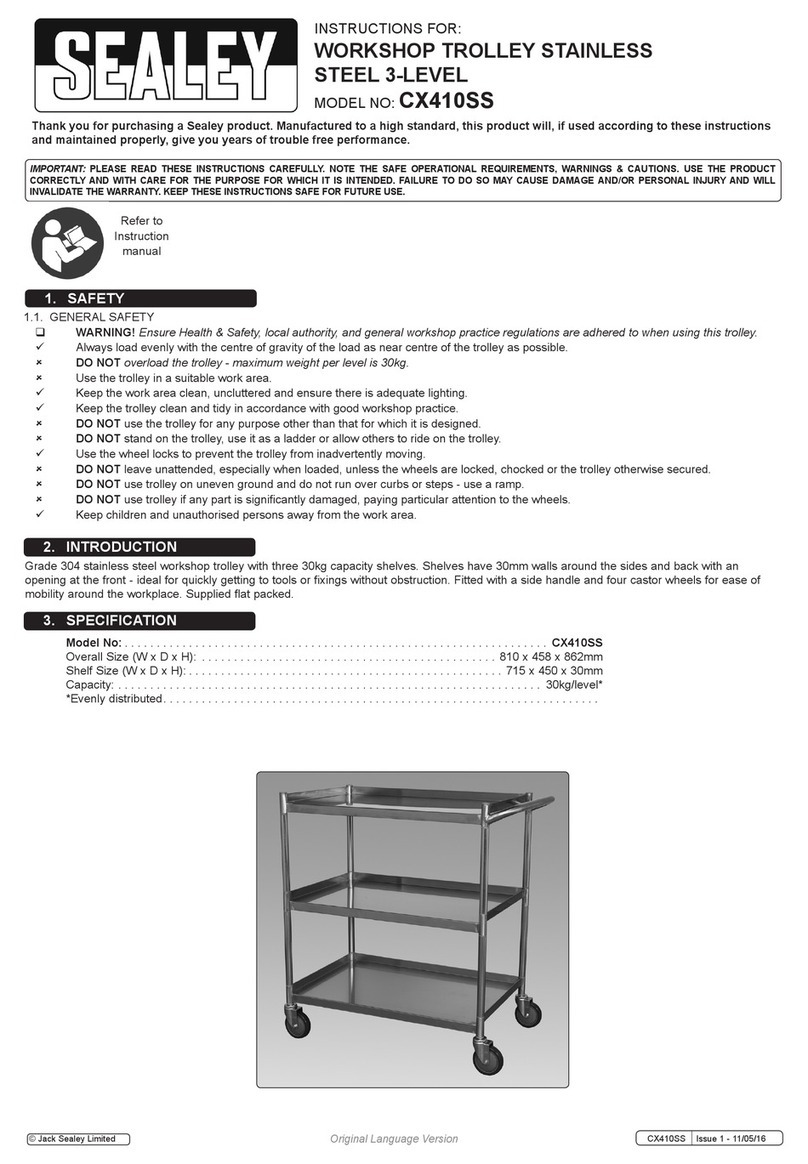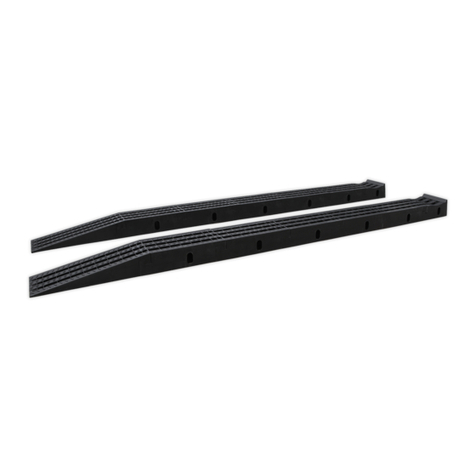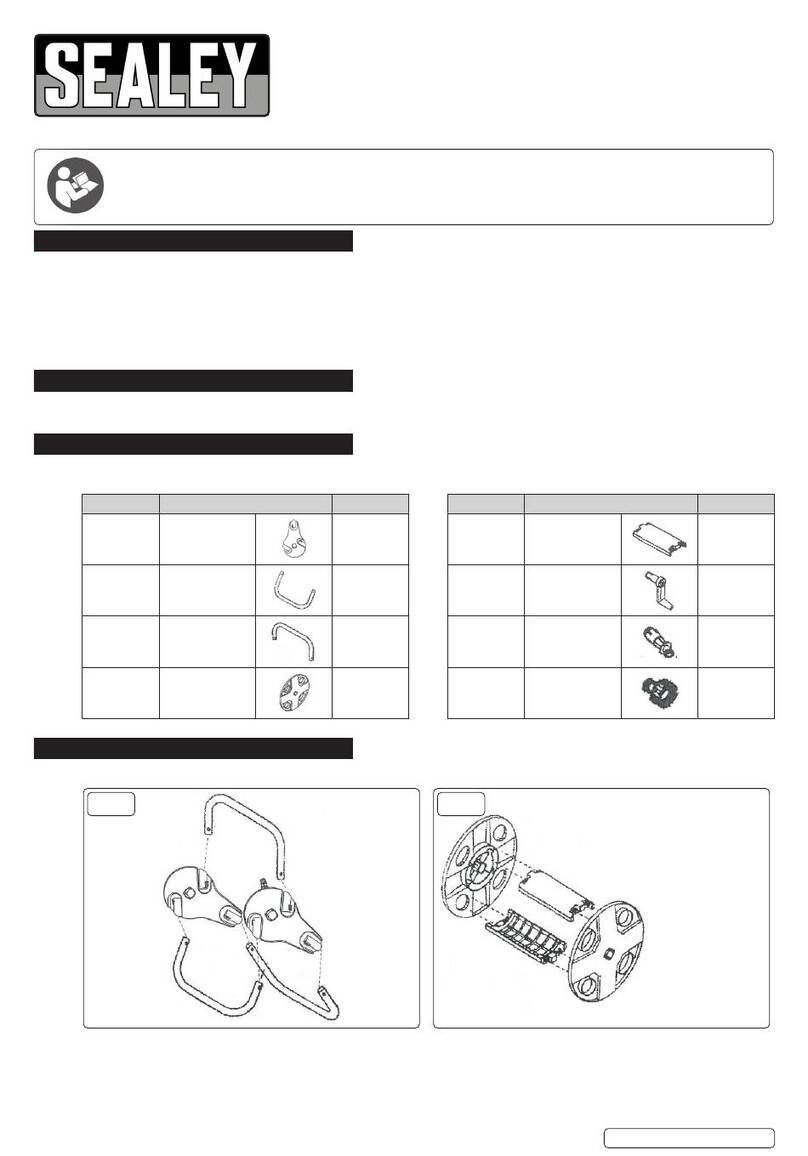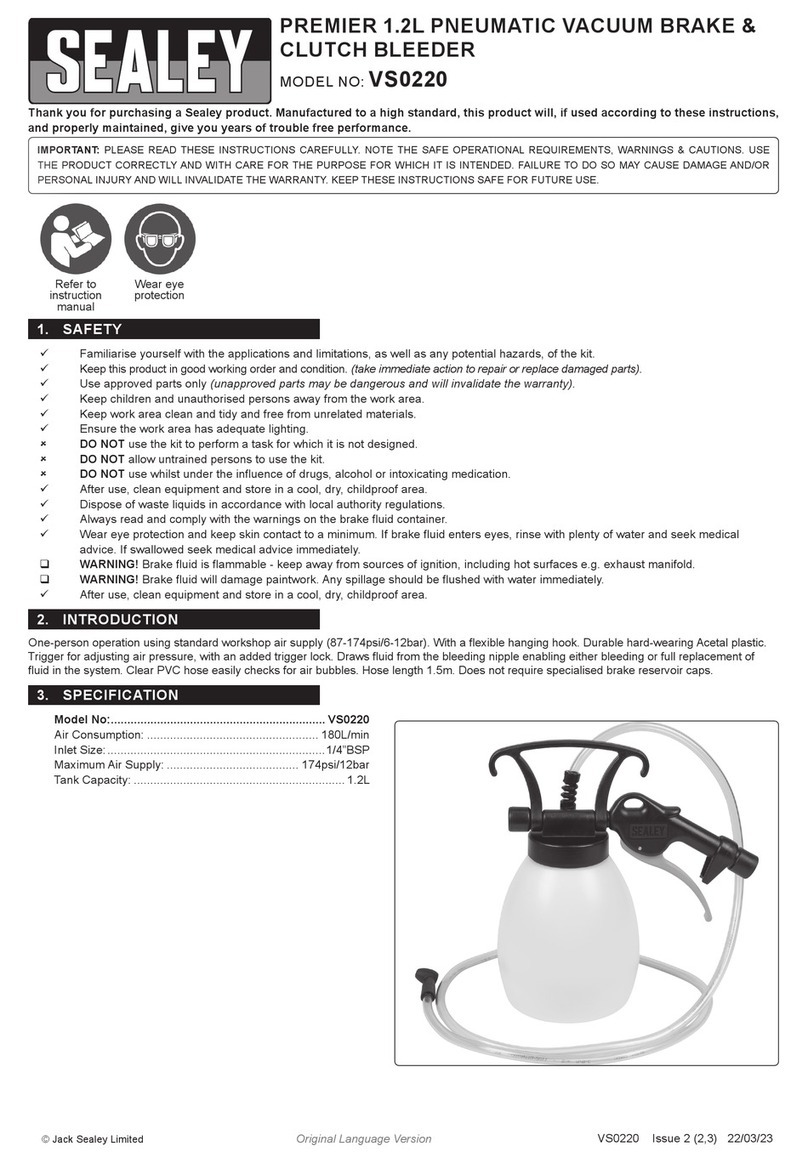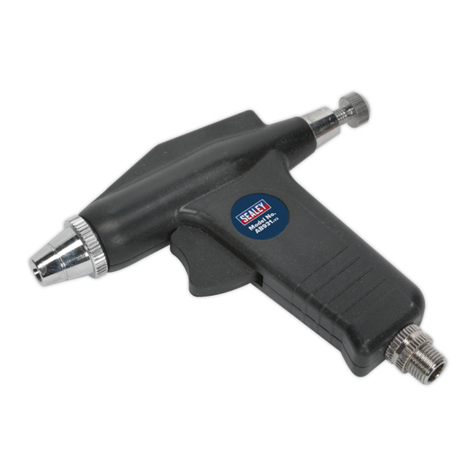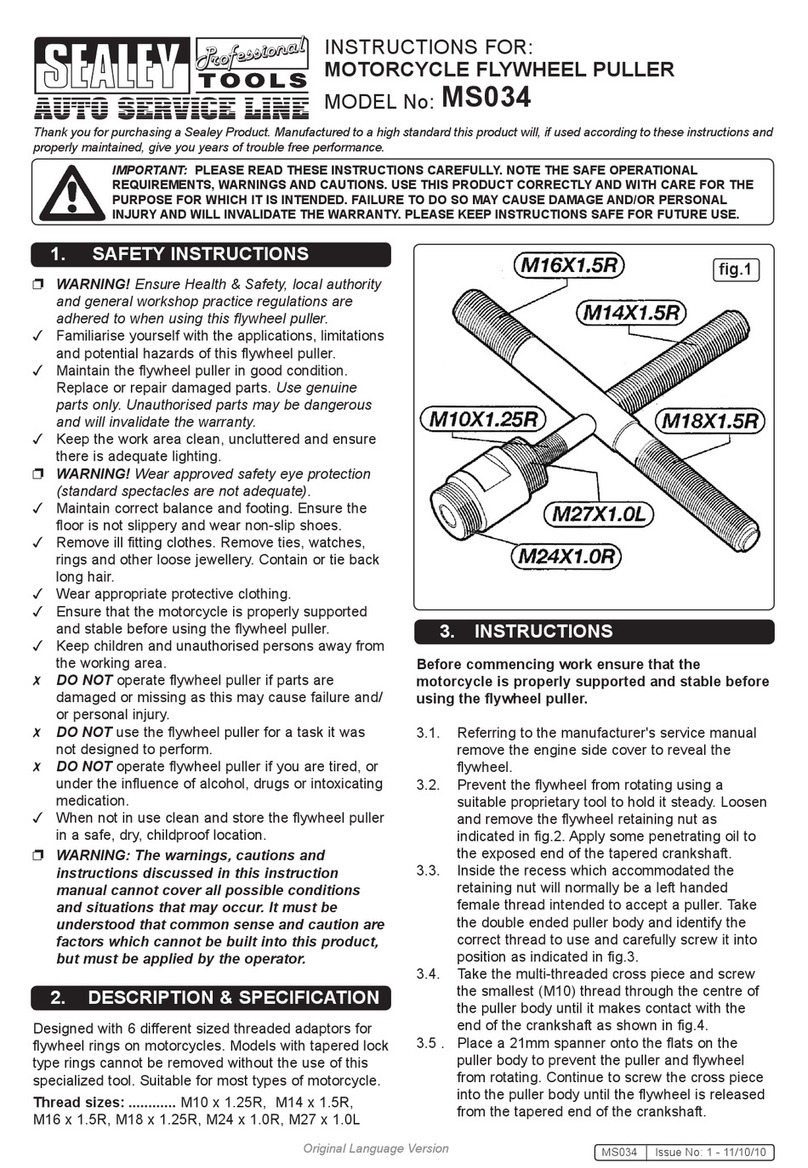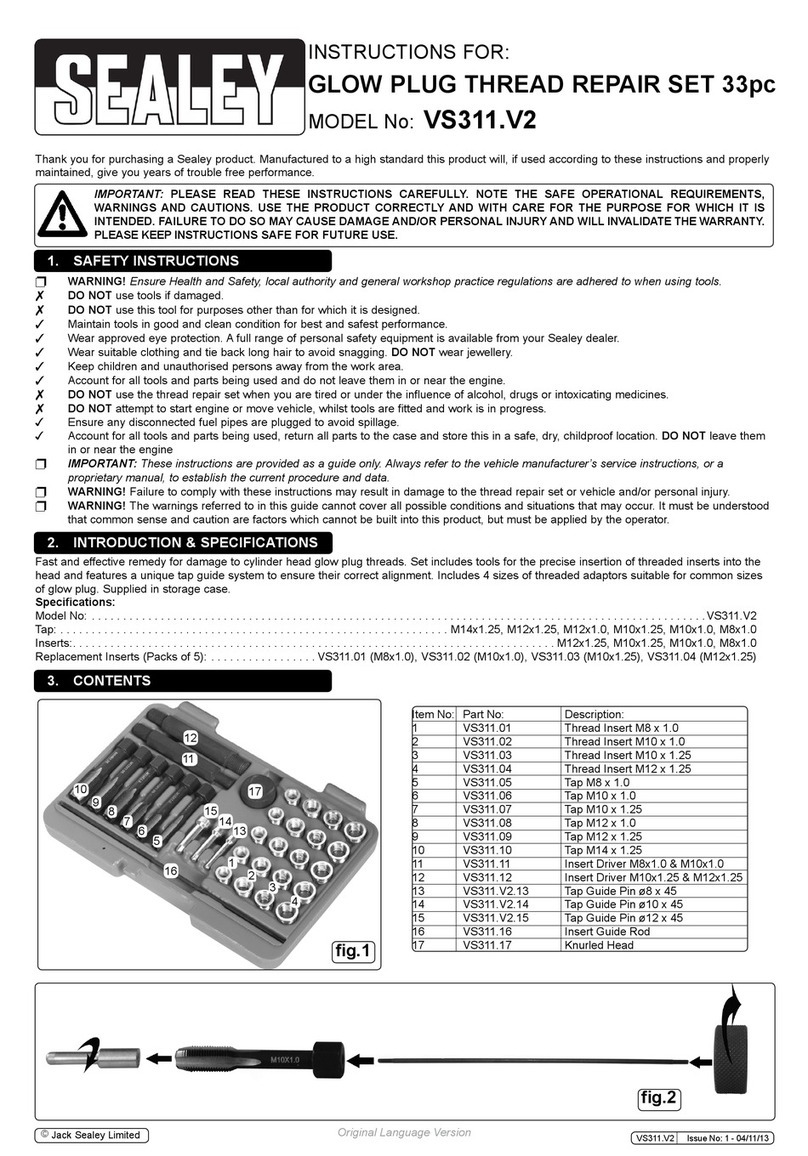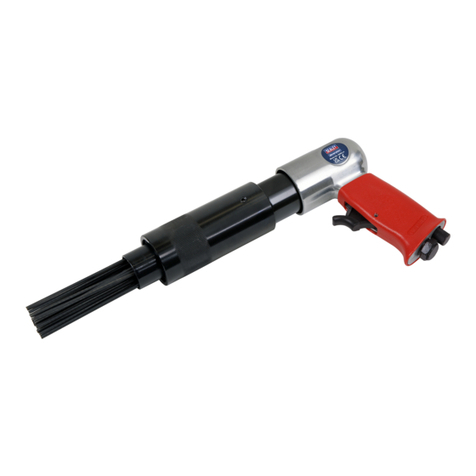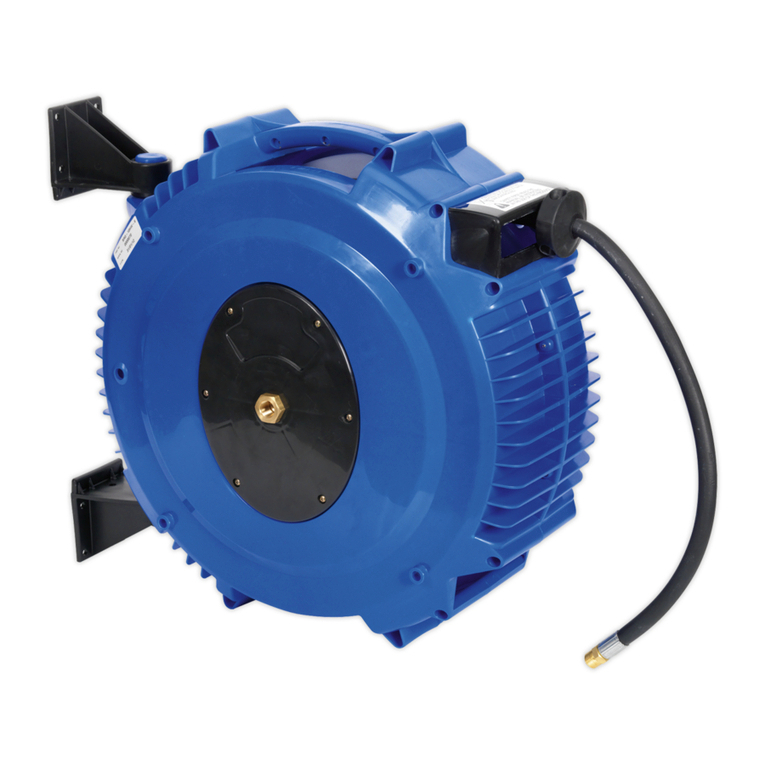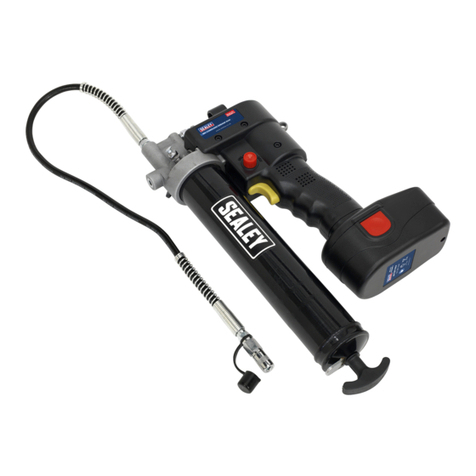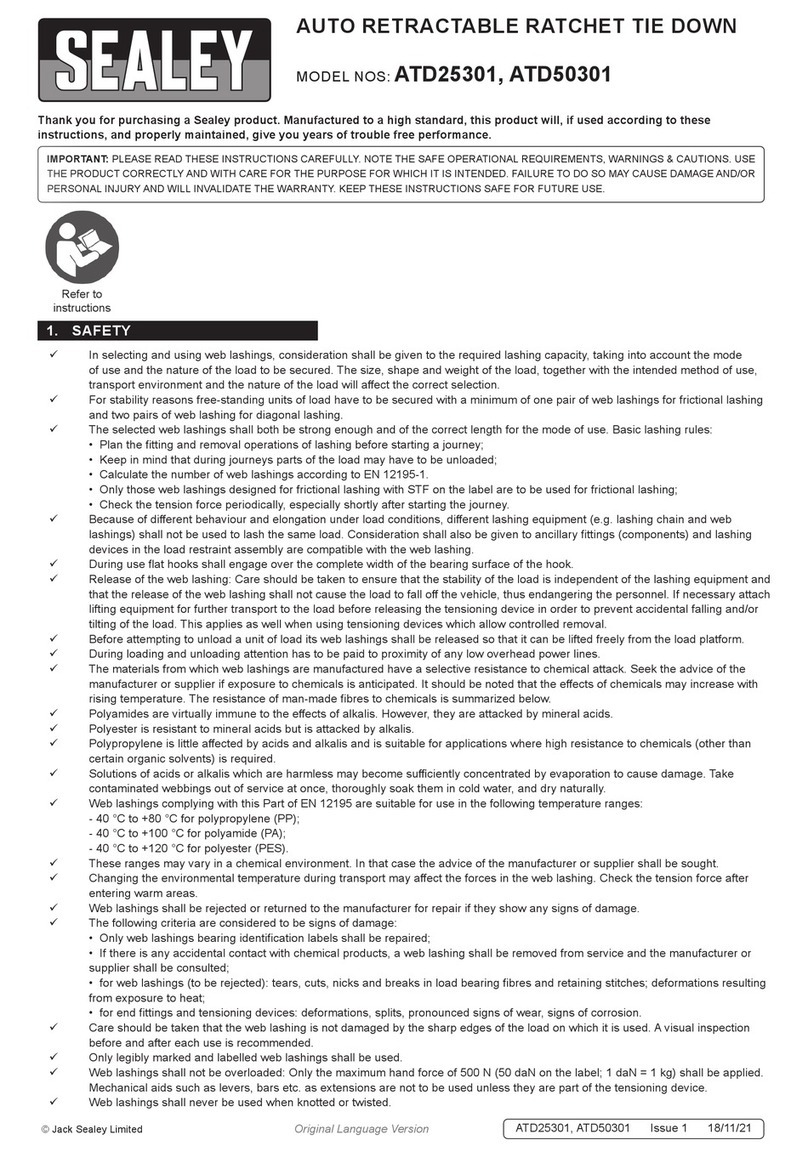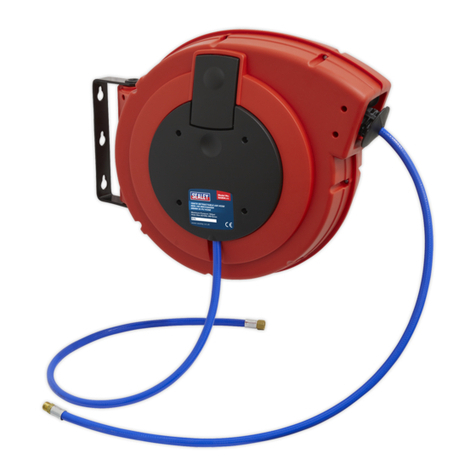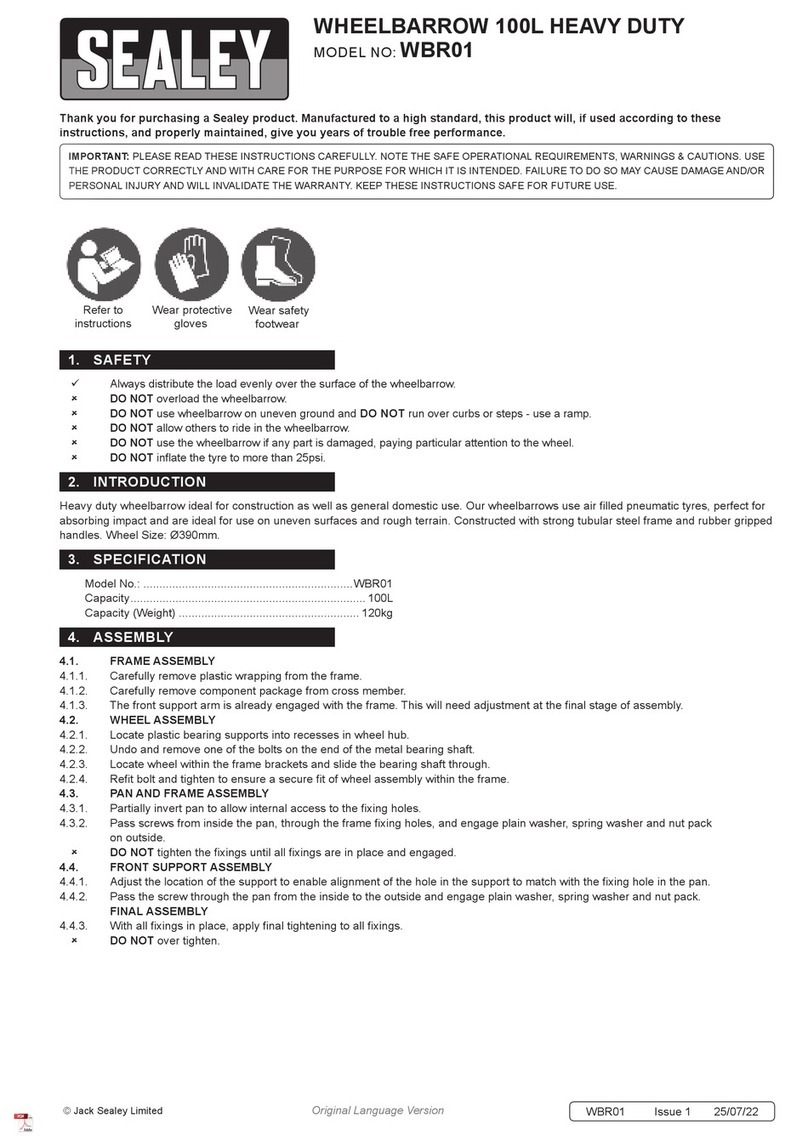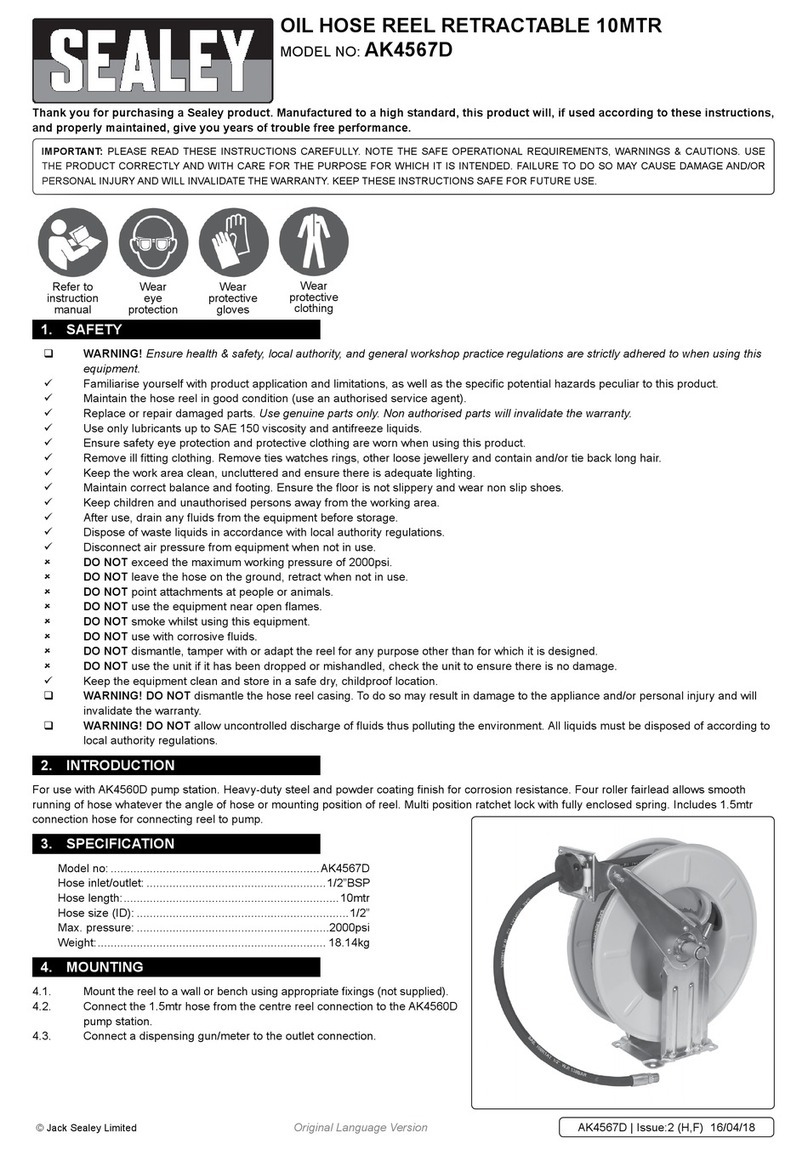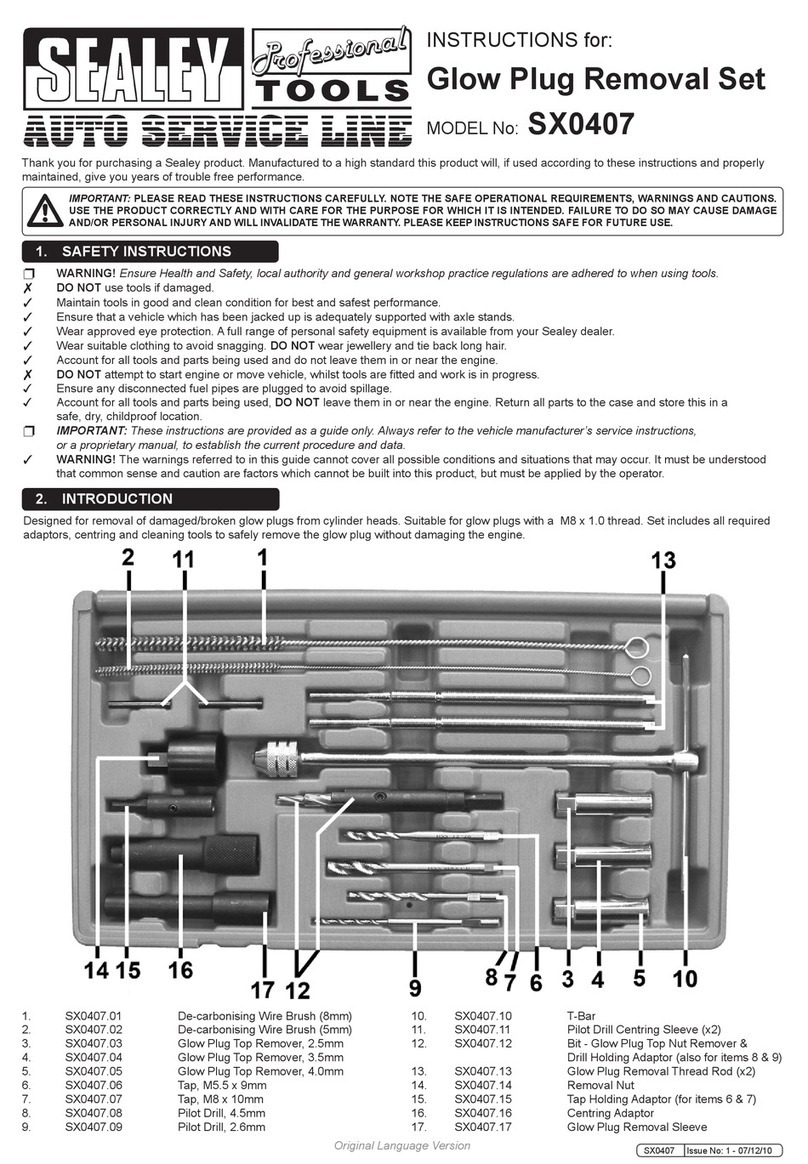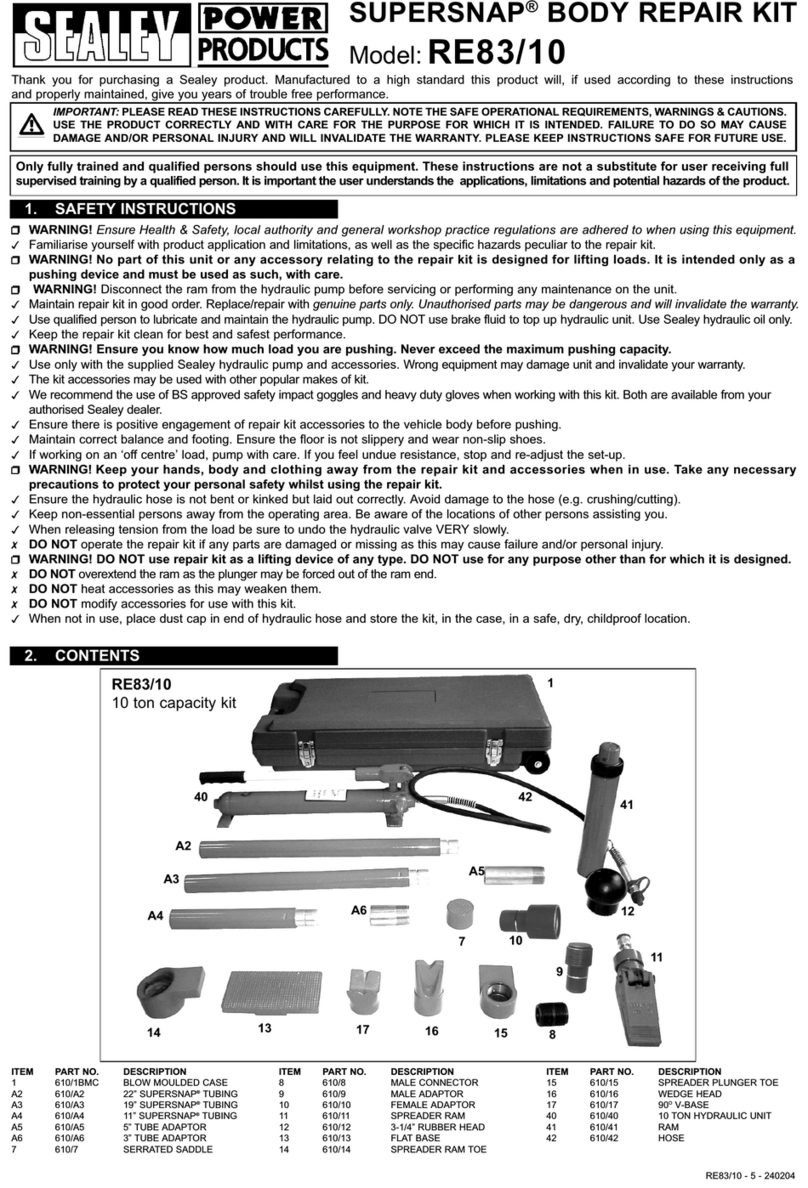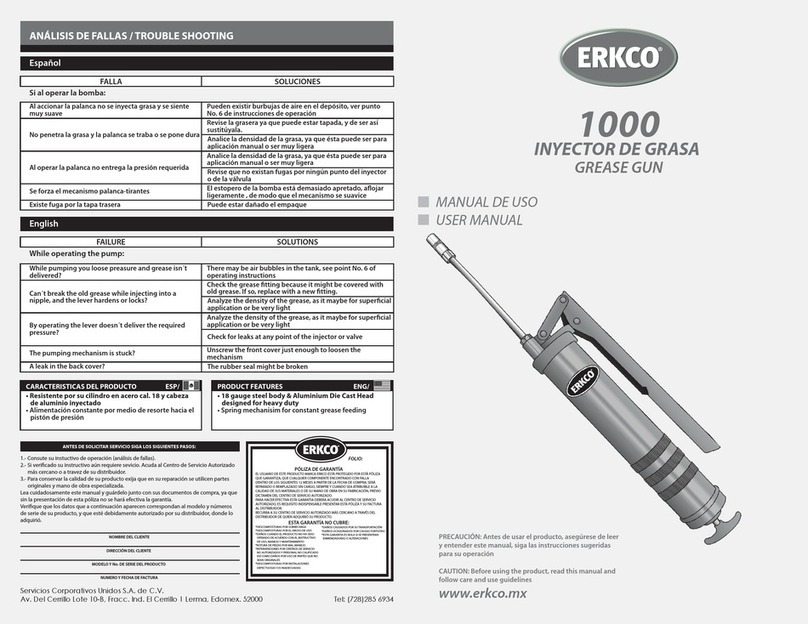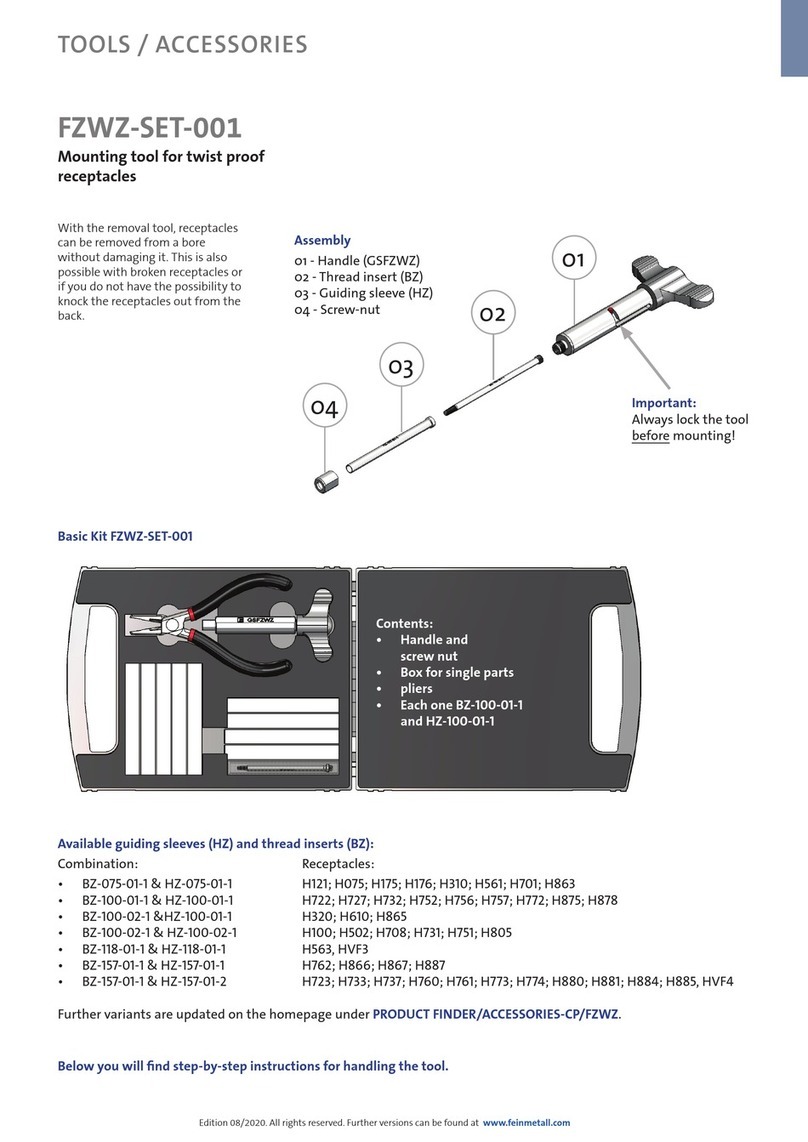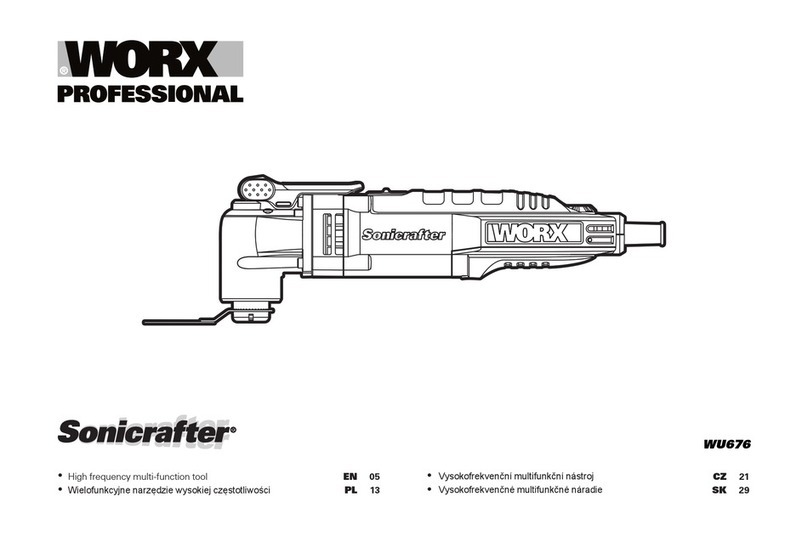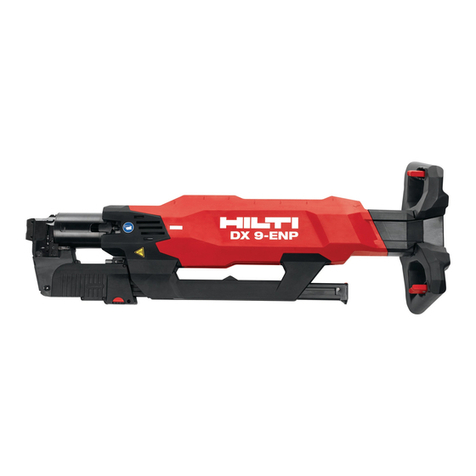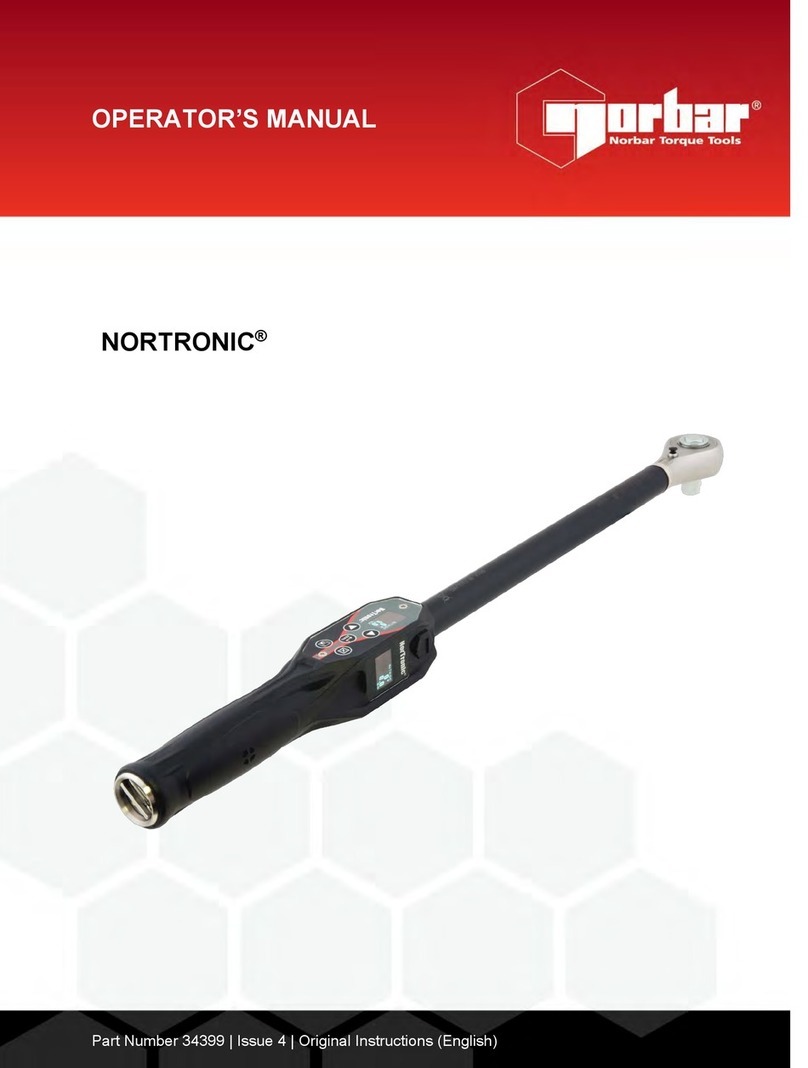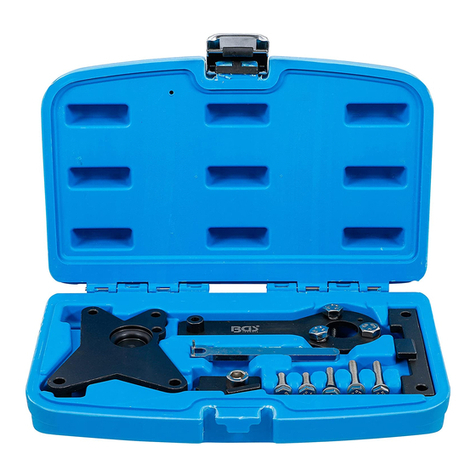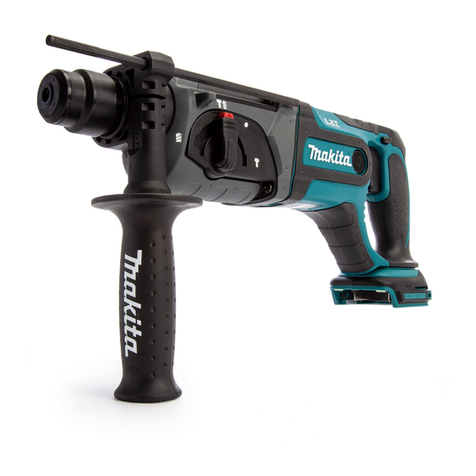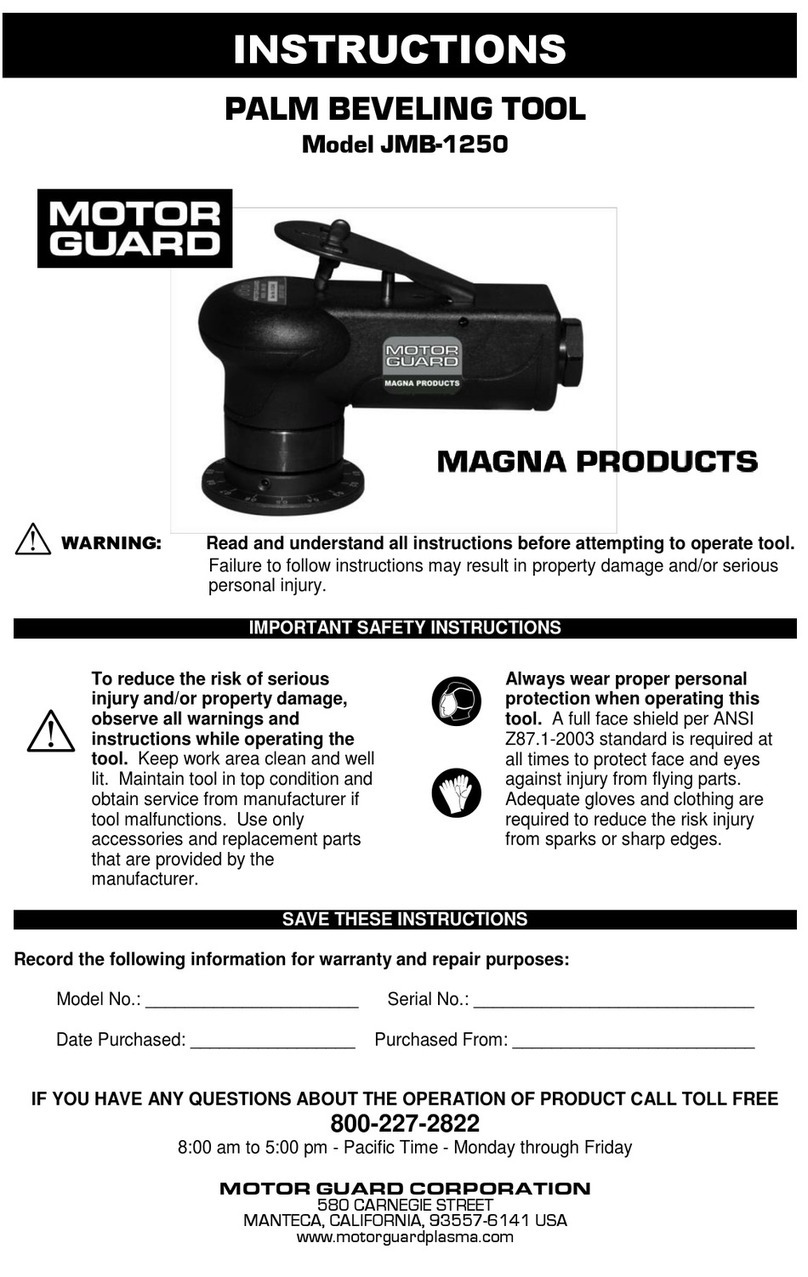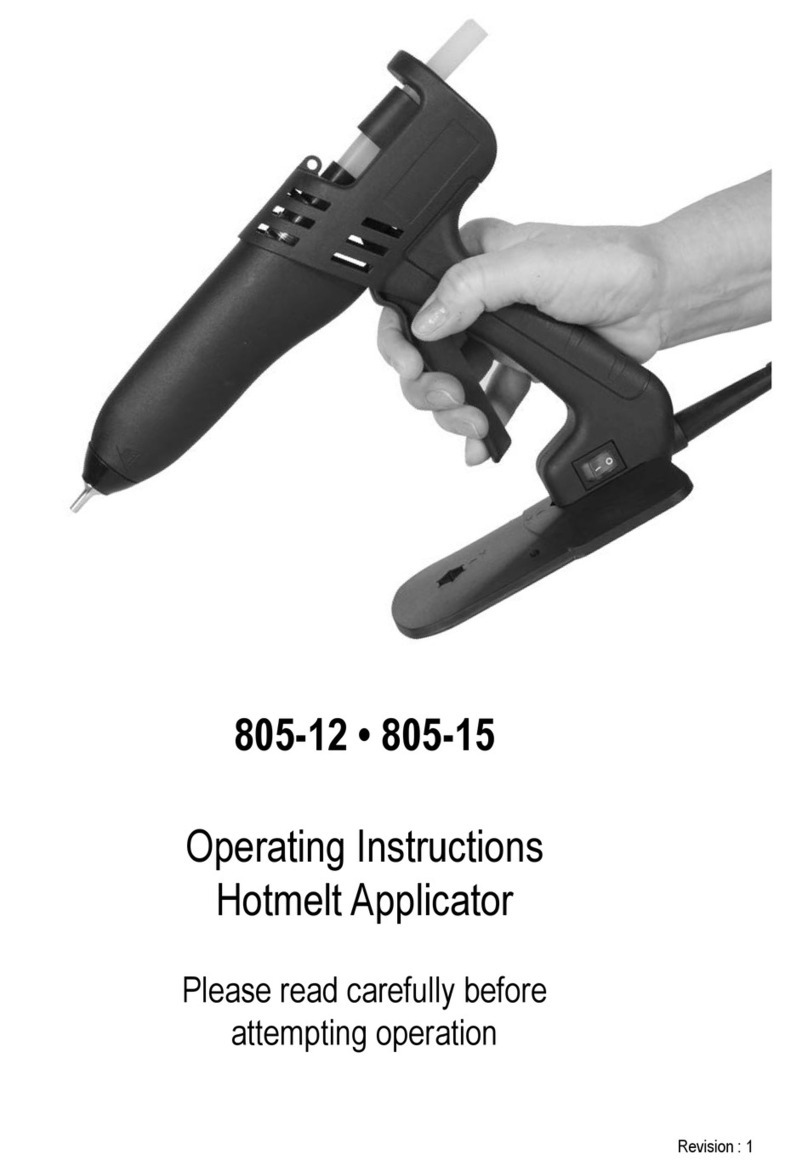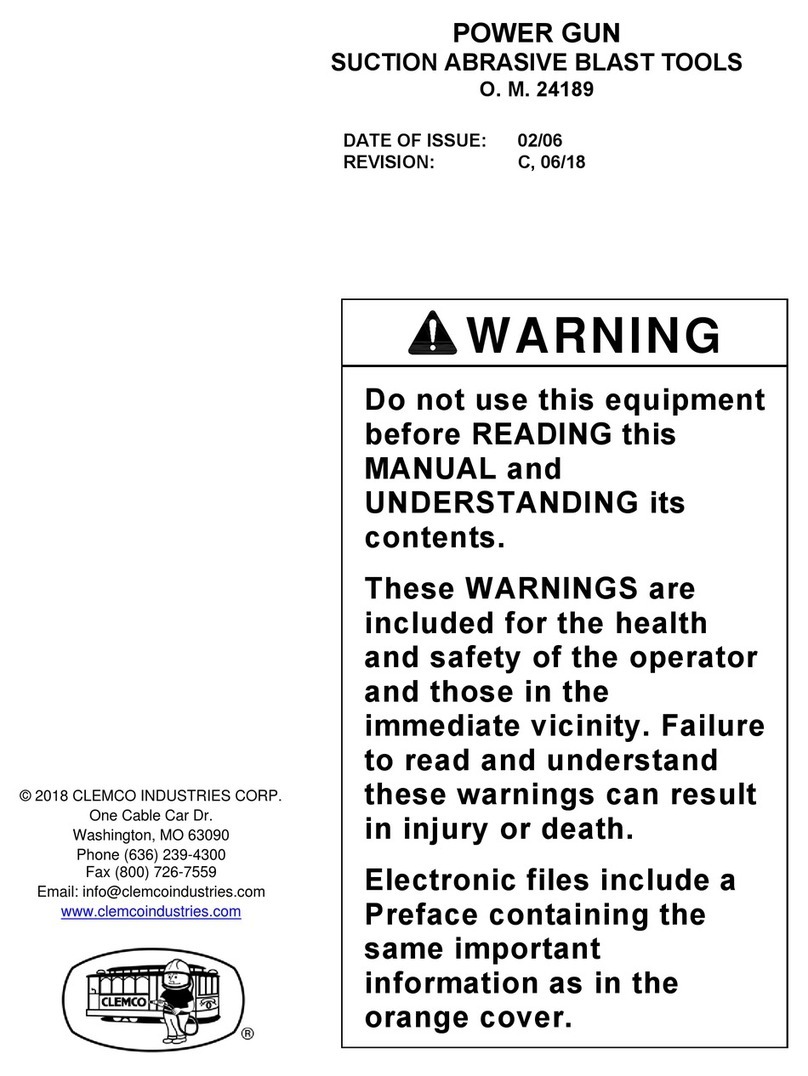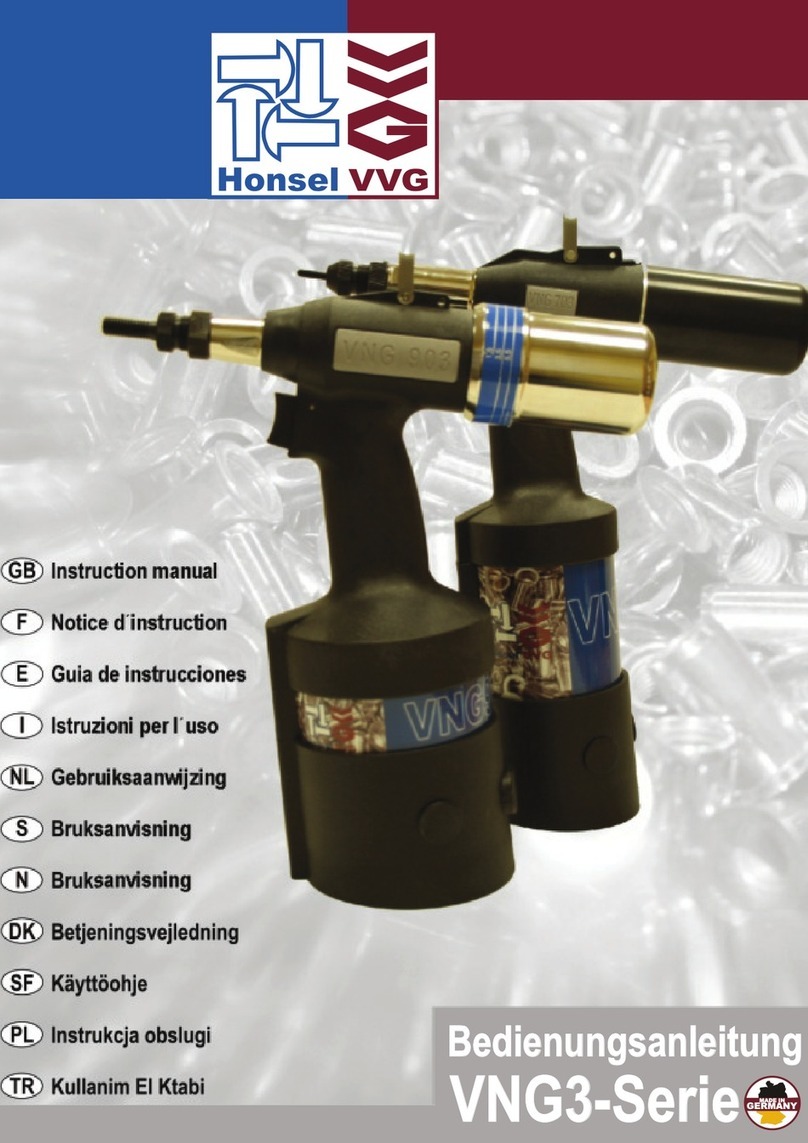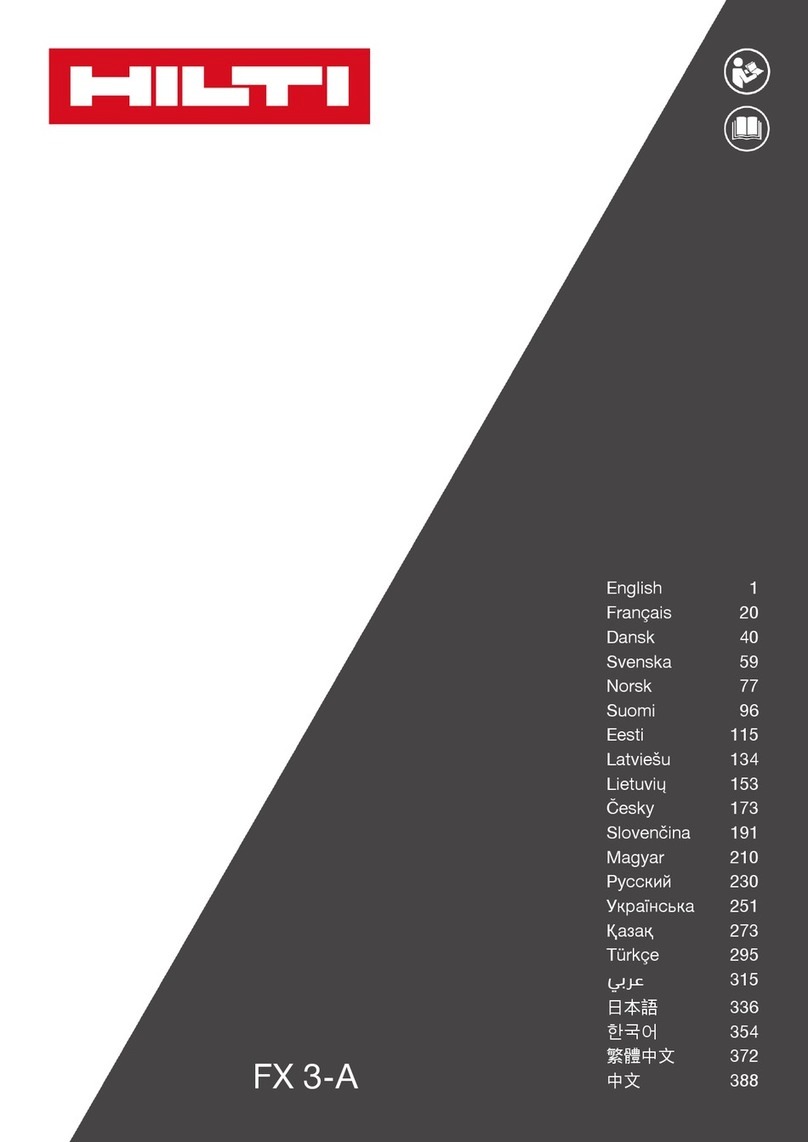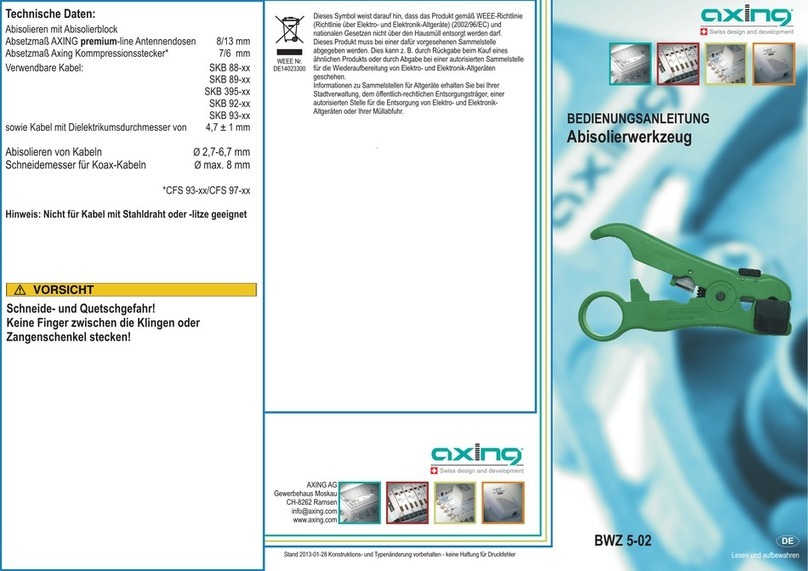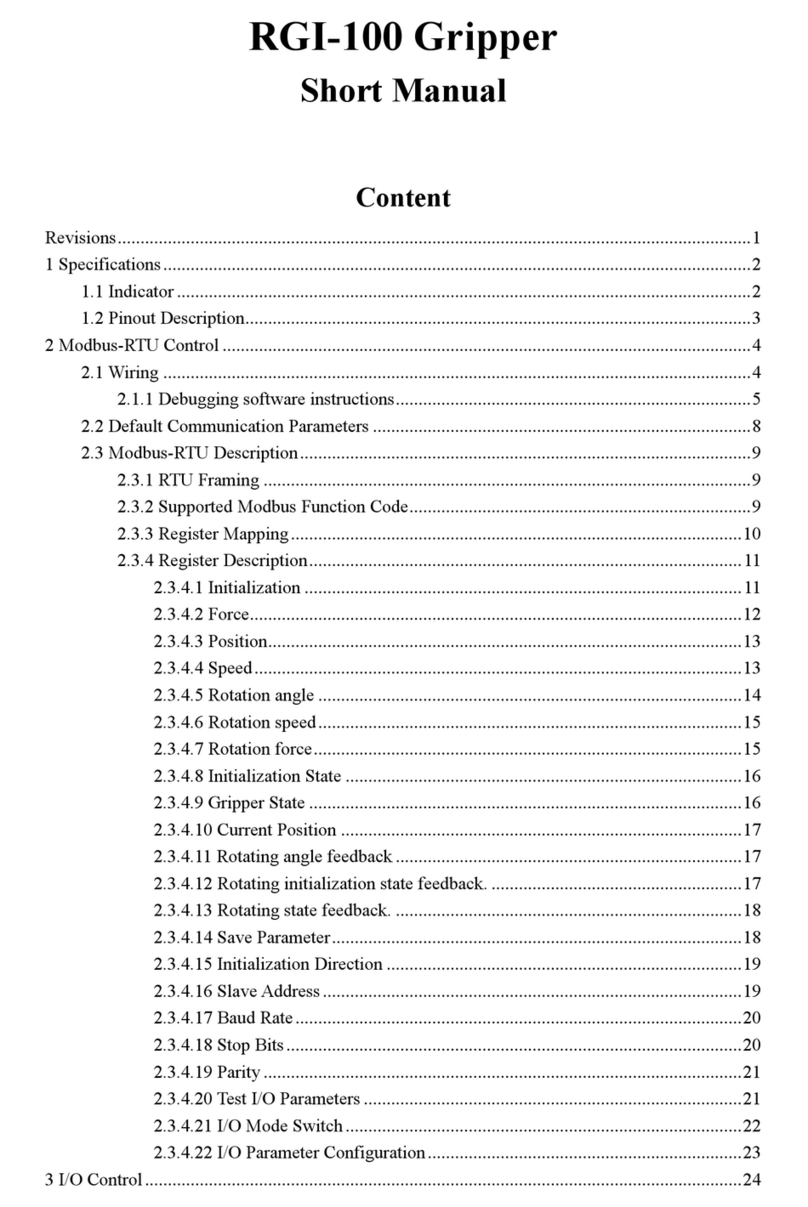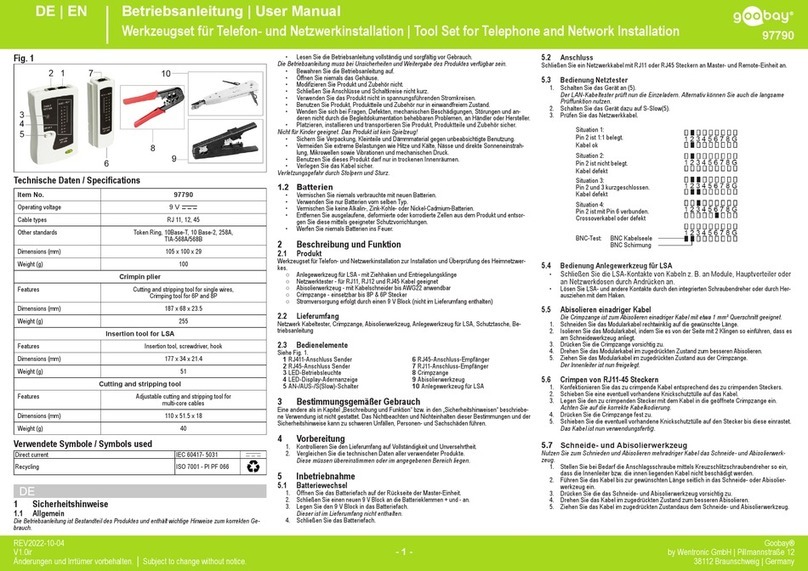
INSTRUCTIONS FOR:
HOLLOW CHISEL MORTISER
Model No: SM94.V3
Thank you for purchasing a Sealey product. Manufactured to a high standard this product will, if used according to these instructions and properly
maintained, give you years of trouble free performance.
IMPORTANT: PLEASE READ THESE INSTRUCTIONS CAREFULLY. NOTE THE SAFE OPERATIONAL REQUIREMENTS, WARNINGS AND
CAUTIONS. USE THIS PRODUCT CORRECTLY AND WITH CARE FOR THE PURPOSE FOR WHICH IT IS INTENDED. FAILURE TO DO SO MAY
CAUSE DAMAGE AND/OR PERSONAL INJURY, AND WILL INVALIDATE THE WARRANTY. PLEASE KEEP INSTRUCTIONS SAFE FOR FUTURE USE.
1.2 General Safety
pWARNING! Disconnect the mortiser from the mains power before changing accessories, servicing or performing any maintenance.
3Locate the mortiser in a suitable working area. Fasten the mortiser to a strong flat working surface. Keep area clean and tidy and free from
unrelated materials and ensure there is adequate lighting.
3Maintain the mortiser in good condition (use an authorised service agent).
3Replace or repair damaged parts. Use genuine parts only. Unauthorised parts may be dangerous and will invalidate the warranty.
3Keep the mortiser clean for best and safest performance and check moving parts alignment regularly.
3Keep mortiser tool bits clean and sharp and ensure bit is secured correctly in the mortiser chuck. If worn or damaged replace immediately.
3Remove adjusting keys and wrenches from the mortiser and its vicinity before turning it on.
3Wear approved eye safety protection.
3Handle loose chisels and drill bits with gloves or cloth as they are very sharp, but DO remove gloves and/or cloth before operating the
mortiser. Keep your hands and fingers away from the mortiser tool bit and chisel when operating.
3Remove ill fitting clothing. Remove ties, watches, rings and other loose jewellery, and contain long hair.
3Maintain correct balance and footing. Ensure the floor is not slippery and wear non-slip shoes.
3Secure work piece by resting against the back stop and top holding clamp.
3Ensure there are no foreign objects in the workpiece i.e. nails or screws.
3Use the depth stop for accuracy and to avoid drilling into the work table, and avoid unintentional starting.
7DO NOT start the mortiser with the tool bit resting against the workpiece. Always bring the operating chisel to the workpiece.
7DO NOT attempt to place a workpiece on the mortiser table whilst the cutting tool is working.
7DO NOT use the mortiser for a task it is not designed to perform.
7DO NOT allow untrained persons to operate the mortiser and keep children and unauthorised persons away from the working area.
7DO NOT get the mortiser wet or use in damp or wet locations or areas where there is condensation.
7DO NOT use mortiser where there are flammable liquids, solids or gases such as paint solvents, waste wiping or cleaning rags etc.
7DO NOT operate the mortiser if any parts are damaged or missing as this may cause failure and/or possible personal injury.
7DO NOT leave the mortiser operating unattended.
7DO NOT operate the mortiser when you are tired or under the influence of alcohol, drugs or intoxicating medication.
3When not in use switch off the mortiser and remove plug from the power supply.
1.1 ELECTRICAL SAFETY
p
p
WARNING! It is the responsibility of the owner and the operator to read, understand and comply with the following:
You must check all electrical products, before use, to ensure that they are safe. You must inspect power cables, plugs, sockets and
any other connectors for wear or damage. You must ensure that the risk of electric shock is minimised by the installation of
appropriate safety devices. A Residual Current Circuit Breaker (RCCB) should be incorporated in the main distribution board. We also
recommend that a Residual Current Device (RCD) is used. It is particularly important to use an RCD with portable products that are
plugged into a supply which is not protected by an RCCB. If in any doubt consult a qualified electrician. You may obtain a Residual
Current Device by contacting your Sealey dealer.
You must also read and understand the following instructions concerning electrical safety.
1.1.1 The Electricity at Work Act 1989 requires that all portable electrical appliances, if used on business premises, are tested by a qualified
electrician, using a Portable Appliance Tester (PAT), at least once a year.
1.1.2 The Health & Safety at Work Act 1974 makes owners of electrical appliances responsible for the safe condition of those appliances
and the safety of the appliance operators. If in any doubt about electrical safety, contact a qualified electrician.
1.1.3 Ensure that the insulation on all cables and on the appliance is safe before connecting it to the power
supply. See 1.1.1. and 1.1.2. and use a Portable Appliance Tester.
1.1.4 Ensure that cables are always protected against short circuit and overload.
1.1.5 Regularly inspect power supply cables and plugs for wear or damage and check all connections to
ensure that none is loose.
1.1.6 Important: Ensure that the voltage marked on the appliance matches the power supply
to be used and that the plug is fitted with the correct fuse - see fuse rating at right.
1.1.7 DO NOT pull or carry the appliance by the power cable.
1.1.8 DO NOT pull the plug from the socket by the cable.
1.1.9 DO NOT use worn or damaged cables, plugs or connectors. Immediately have any faulty
item repaired or replaced by a qualified electrician. When a BS 1363/A UK 3 pin plug is
damaged, cut the cable just above the plug and dispose of the plug safely.
Fit a new plug according to the following instructions (UK only).
a)Connect the GREEN/YELLOW earth wire to the earth terminal E.
b)Connect the BROWN live wire to the live terminal L.
c)Connect the BLUE neutral wire to the neutral terminal N.
d)After wiring, check that there are no bare wires, that all wires have been correctly
connected, that the cable outer insulation extends beyond the cable restraint and that the
restraint is tight.
Double insulated products, which are always marked with this symbol , are fitted with live
(brown) and neutral (blue) wires only. To rewire, connect the wires as indicated above.
DO NOT connect either wire to the earth terminal.
1.1.10 Products which require more than 13 amps are supplied without a plug. In this case you must contact a qualified electrician to ensure
that a suitably rated supply is available. We recommend that you discuss the installation of an industrial round pin plug and socket
with your electrician.
1.1.11 If an extension reel is used it should be fully unwound before connection. A reel with an RCD fitted is preferred since any appliance
plugged into it will be protected. The cable core section is important and should be at least 1.5mm2, but to be absolutely sure that the
capacity of the reel is suitable for this product and for others which may be used in the other output sockets, we recommend the use
of 2.5mm2 section cable.
Blue
Neutral
Wire
Yellow & Green
Earth Wire
Cable
Restraint
FUSE RATING
THIS PRODUCT MUST BE FITTED
WITH A5AMP FUSE
Brown
Live
wire
SM94.V3 - 1 - 161205

